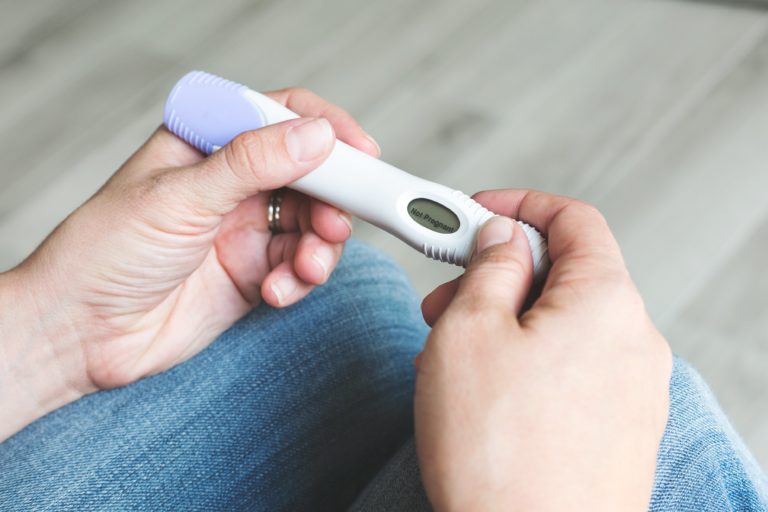Fertility awareness methods (FAM) are effective, highly affordable methods of natural family planning (NFP) that are used all over the world. On this page, you will read all about the research-backed success rates of the most common, evidence-based methods of fertility awareness and natural family planning available for use today.
When it comes to selecting a fertility awareness-based method of natural family planning, there’s one question that’s of utmost importance: Does it work?
With the evidence-based FAMs available today, the answer is a resounding yes, despite what popular opinion and perhaps even some doctors would have you think.
The CDC states that fertility awareness method failure rates range from 2 to 23%. This wide range indicates that some methods are clearly more effective than others. But how can you tell which FAMs are the most effective? We will explore this question in detail below. You will find that there are a few important factors to keep in mind when evaluating which method you can trust for your individual wellbeing and the future of your family.
The difference between birth control “perfect use” and “typical use”
First, it’s important to note the difference between “perfect use” and “typical use.” The method failure rate reflects how many unintended pregnancies occurred in a clinical trial, wherein couples followed every rule to a T, with no human error; from this data, we get the success of the method with “perfect use.” Therefore, the “typical use” success rate reflects how successful the method is when used in real life, where people make mistakes of varying degrees. Note that the typical use success rate is an average calculation. It includes those who didn’t follow the rules at all on some occasions, those who made minor errors on others, and those who followed the method more or less perfectly. Your own success with the method will therefore depend on how consistently and correctly you follow the rules of your chosen method, much like the success of the birth control pill hinges on a woman taking it every day, at the exact same time.
The difference between FAM, the Rhythm Method, and calendar methods
As you start to learn more about FAMs, you’ll quickly see that there’s a whole lot more to contemporary methods of natural family planning than there is to calendar-based methods. “Calendar-based methods” is the blanket term for the rhythm method (first formalized in the 1930s) and the Standard Days method (introduced in 2002). The rhythm method is a predictive method, which uses a woman’s historically longest and shortest cycle lengths, in order to predict when she will ovulate during her next cycle. This antiquated method has not been tested with contemporary clinical designs.
The Standard Days method is for a woman whose cycles range from 26 to 32 days in length, and it predicts she’ll be fertile for days 8-19 of her cycle. With the Standard Days method, the perfect use failure rate is 4.75% and the typical use failure rate is reported as 11.96%.
While the standard days method, Cycle Beads, and apps developed from these predictive models are natural forms of birth control, they don’t provide users with knowledge of their fertility signs and the valuable health information that comes with it. These predictive methods also have lower effectiveness rates than methods that train women to observe and chart their body’s unique signs of fertility in real-time.
Effectiveness rates of modern Fertility Awareness Methods
Contemporary, evidence-based methods of natural family planning track the various phases of a woman’s cycle each month via observable biomarkers, such as hormone levels (taken from a urine sample gathered first thing in the morning), basal body temperature (taken by mouth first thing in the morning), patterns of cervical mucus (observed during bathroom visits throughout the day), or a combination thereof. You’ll find the studies that produced the following effectiveness rates linked in the descriptions below.
The Symptothermal Method (STM) combines basal body temperature (BBT) readings with observations of cervical mucus and sometimes that of the cervix itself. The perfect use rate for this method is 0.4%, and the typical use rate is 1.8%.
The Billings Ovulation Method uses cervical mucus observations to determine when a woman is fertile and when she is infertile. This universal method has been successfully taught to populations with low literacy rates, little access to technology, and even those who are visually impaired. With perfect use, the failure rate is 1%, and with typical use, it’s 10%.
The Creighton Model is another method which relies on the categorization of observed cervical mucus. Creighton uses color-coded stickers to interpret a woman’s chart. With perfect use, the method’s failure rate is 0.5%. With typical use, the failure rate is 4%.
The Marquette Model utilizes a ClearBlue Easy Fertility Monitor to track levels of luteinizing hormone (LH) and estrogen in the urine. Variations on the method use cervical mucus or BBT in conjunction with hormone readings. With perfect use, the failure rate is 0.1%; with typical use, it’s 7%. Marquette Method researchers are currently developing protocols for use of the Mira fertility monitor.
The Two Day Method is a method in which a woman asks herself if she noticed any cervical secretions today or yesterday. If either answer is “yes,” then she understands herself to be fertile. If both answers are no, she understands herself to be infertile. The perfect use failure rate is 4%, while the typical use rate is 14%. Though this method, in particular, sounds simple (and it is!), it is always best to learn any method from a trained instructor.
Comparing NFP to hormonal birth control
When you compare modern FAM pregnancy prevention effectiveness rates like those above to the rates for the Pill (perfect use 0.3%, typical use 9%), condoms (perfect use 2%, typical use 18%), and IUDs (perfect use 0.2%, typical use 1%), FAMs hold their own.
Every woman deserves to know the truth about all of the family planning methods available to her today—especially those that are low cost, with no side effects, and that can help her achieve as well as avoid pregnancy.
Click here to find an instructor in the FAM method of your choice.
Important: Natural methods do NOT protect you against STDs. Condoms decrease your risk of STDs, but do not eliminate the risk completely.
It is important to note that using condoms with fertility awareness methods during the fertile period of one’s cycle can reduce the FAM’s effectiveness rate for pregnancy prevention.
This page was last updated on July 9, 2024.
-

Unpacking the effectiveness range of FAMs given by the CDC
By Rachel Wilkerson, PhD • June 25, 2021Despite a new surge of interest, fertility awareness methods (FAMs) remain a critically understudied method of family planning.… -

Journal article describes how effectiveness of FAMs is often misrepresented
By Grace Emily Stark • February 26, 2021Fertility Awareness Methods (FAMs), also known as methods of Natural Family Planning (NFP), are backed by research verifying… -

When You Really Shouldn’t Get Pregnant: 4 ways to Increase the Effectiveness of Your Fertility Awareness Method
By Jessica Davidson • February 5, 2020In previous articles, we have shown that many Fertility Awareness-Based Methods (FABM) are an effective alternative to contraceptives… -

This Chart “Perfectly” Displays Perfect vs. Typical Use Effectiveness Rate for Birth Control Methods
By Gabriella Patti • May 31, 2019The fertility tracker, DOT recently shared a blog post on their website entitled, “Contraceptive Effectiveness in the Real… -

CDC Changes Effectiveness Rating on Fertility Awareness Methods
By Gerard Migeon • May 27, 2019Until recently, the Centers for Disease Control (CDC) reported that the failure rate of Fertility Awareness-Based Methods in… -

The Ultimate Guide to the Effectiveness of Evidence-Based FAMs
By Lindsay Schlegel • November 17, 2018When it comes to selecting a fertility awareness method (FAM) of natural family planning, there’s one question that’s… -

Are FAMs more effective than the Pill?
By Gerard Migeon • April 22, 2017A few weeks ago a reader wrote me to challenge a statement I made in my December 2014… -

Who tells the truth about the effectiveness of fertility awareness methods?
By Gerard Migeon • December 15, 2014It’s been interesting to see articles popping up more and more frequently with accounts of the problems with… -

Why some new moms are shunning hormonal birth control
By Melayna Alicea • October 15, 2024“My body has been through the wringer”





